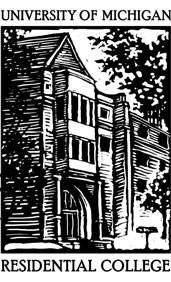
On the trip from St. Petersburg to Vytegra, the thing that stood out to me the most was the bus itself. Our ride was a Soviet-Era bus, probably from the seventies, painted pale blue and adorned with hot pink curtains that covered half of the window. Two men took turns driving the bus and one of the men’s seven-year-old son joined us on the trip as well. Upon boarding the bus, I chose a seat a little less than half way back. Less than an hour into the ride, I had to move, along with Katie, sitting in front of me, because our feet felt like they had been placed into an oven, but in reality, there was just a heater under my seat. No one else felt that way; in fact, the rest of the bus was still wrapped up in their winter coats. Katie and I moved all of our stuff into the two rows at the back of the bus, and of course we had to sit on the right side because extra luggage was piled up on the left side of the last row and the seat in front of that was broken, completely fallen through. Needless to say, the back of the bus was much colder, a pile of snow stayed at Katie’s feet the entire ride, from where the last group of people had entered the bus from the door in the back. Katie also had to struggle with a large pipe that stuck out into the last row. At about noon, we stopped at a small rest station along the road where two other tourist busses were stopped at the same time. One was a modern, sleek, white bus, not more than six years old. The other was white as well, and not more than fifteen years old. Our bus clearly stood out from the rest as it gave off, what I would call, the impression of a “hippy van.” Amazingly enough, this bus was able to make it to Vytegra without a hitch, unlike last year, when the group supposedly had a “real bus”, but that one broke down. The bus, which came from Vytegra, clearly shows the lack of money of the locals of Vytegra. This is probably the best van this driver could afford, and driving this bus is probably his living. Where as the other buses in the rest stop parking lot were clearly from other, wealthier places, perhaps St. Petersburg or Moscow, where money for a new bus is easily at a driver’s disposal.



The Alexander Svirsky Monastery has played a huge role in the history of the Russian Orthodox religion. As the holiest place in Russia and the only place the trinity has appeared outside of the Holy Land, the monastery first served as a monastery and transfiguration center for a couple hundred years until Catherine the Great secularized it, even though it remained as a transformation center and local seminary. After the Russian Revolution, all of the brethren were either killed or exiled and many relics were destroyed. In 1953, the monastery served as an asylum until restoration began in the 1970s and it was reverted back to its original purpose, a monastery. The monastery is funded completely from personal donations and is not at all in poor condition. This shows the rediscovery of religion from the Russian people post Soviet rule and their desire to return to their former traditions.


No comments:
Post a Comment